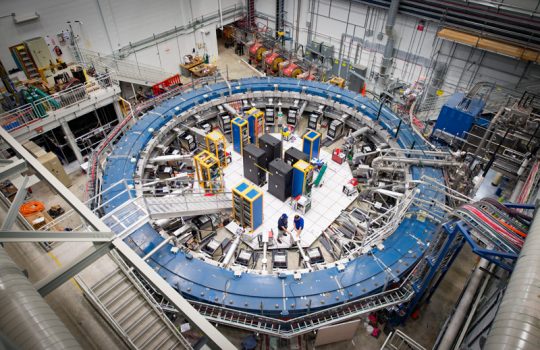David Sweigart wins 2020 URA Thesis Award
Cornell University postdoc David Sweigart has won the 2020 URA Thesis Award for his dissertation analyzing the first year’s data from Fermilab’s Muon g-2 experiment. His efforts in analyzing the anomalous precession frequency of the muon could help confirm or challenge the Standard Model of particle physics.



